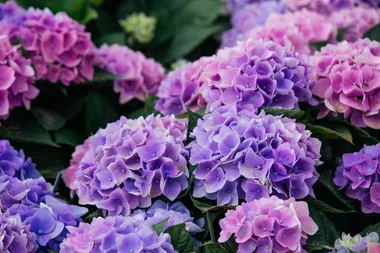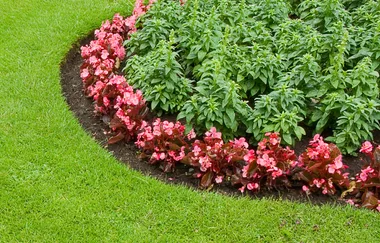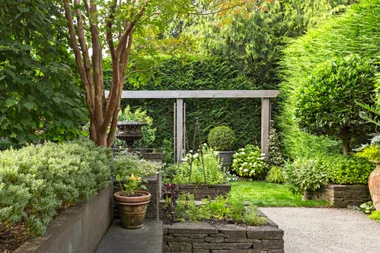Clivias or kaffir lilies (C. miniata) are the go-to plant for winter flowering in a dry, dark corner of your garden with their fat clusters of 10-20 trumpet-shaped, iridescent flowers. The bright colours bring a touch of the tropics to your winter garden. It’s also relatively simple to care for clivia in your garden or a pot.
Or grow them indoors where you can have a roaring blaze of colour brightening the dark corners of a room.
And in summer when the flowers have finished, collect the big, bold seeds to grow more, and use the dense, dark-green foliage as a backdrop to your summer plant specials. That’s called being cluey with clivias!
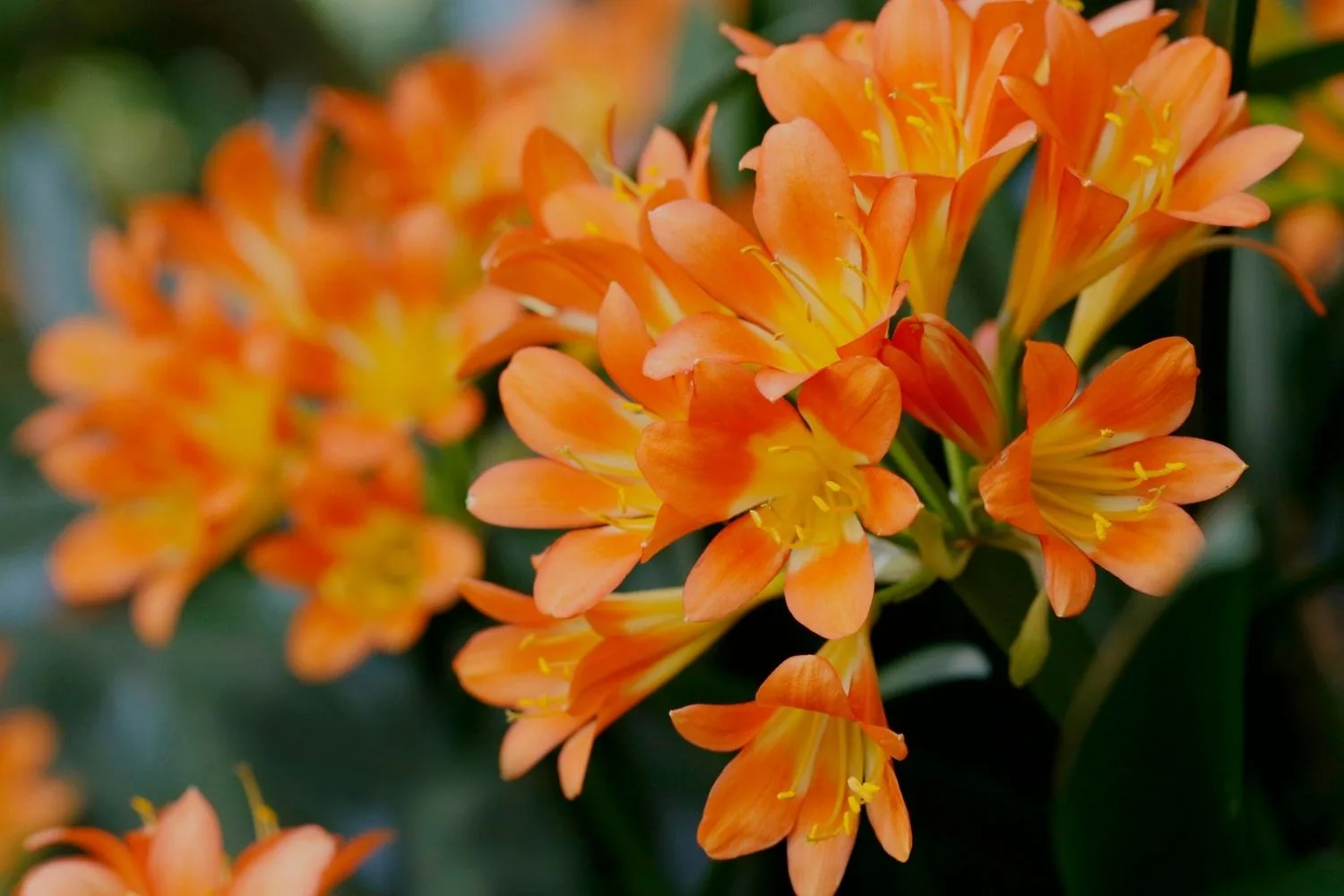
Designing with clivias
The classic, tropical-looking orange flowers – or bright red, salmon, yellow or cream – are what draws your eye, but the glossy, dark-green, strappy leaves that grow in striking arches are an architectural feature for all seasons. The leaves emerge in an alternating pattern and arch directly over one another with perfect symmetry, making a strikingly formal silhouette.
Use the foliage as a backdrop to keep your dry, shady spot in flower though spring, summer and autumn by planting in the same plot:
- Bergenia sp
- Mona lavender (Plectranthus sp)
- Coral bells (Heuchera sp)
- Foamflower (Tiarella sp)
- Ajuga sp
- Lilyturf (Liriope sp)
The leaves of all these plants provide a striking contrast to clivias.

How to care for clivia miniata
Planting
Before planting in spring or autumn, prepare soil by digging over with a generous quantity of compost. Position each plant 50cm apart and ensure the white part of the stem is almost buried.
Aspect
Dappled shade, morning sunlight only. In heavy shade, clivias will grow leggy and not flower so well.
Climate
Drought tolerant but not frost tolerant.
Soil
Loamy and free-draining. Not clay.
Feeding
To care for your clivia, water the soil regularly in spring and summer, then sparingly in autumn and winter. Don’t let water settle in foliage crowns as this encourages fungal rot. They like dry shade and will flower more prolifically. In autumn, spread compost over the soil and after flowering has finished apply organic fertiliser.
Mulch
Spread organic mulch between plants once a year.
After flowering care
When flowering has finished, remove stems close to the base, unless you want the seeds.

How to divide clivias
To ensure your clivia plants stay healthy and blooming, replant every four to five years in late spring or early summer when they’ve finished flowering. This is also a good time to divide them or separate the offsets (in a similar way to agapanthus) so you can double your stock.
When a clivia offset has four of its own leaves, dig up the whole plant, cut the offset from the parent with a clean, sharp knife – be sure to include some roots – and place the offset in potting mix or equal parts of peat moss and coarse sand or perlite and keep warm in medium light.
Water to keep the medium moist but not saturated. Plant in garden when roots appear on the medium’s surface. Replant the parent but, before replanting, dig over the soil with compost to aerate and nourish it.

How to grow clivias from seed
The big red or yellow berries (it depends on flower colour) arrive in early spring as flowering dies down. You can pick the berries then and remove the flesh around the dark, pearl-like seeds.
Wash seeds in a mild fungicide solution then press into in seed-raising mix or very fine pine bark, but don’t bury them. Seeds germinate in about a month and in six months can be transferred to larger pots.
Or you can leave the berries on the plant until they are shrivelled and the flesh dry. Wash seeds in fungicide and plant immediately so they don’t dry out.
Clivias are slow growers and it can take up to five years for a seed to grow into a flowering plant. Keep in a warm, protected, ventilated spot out of direct sunlight. Water in spring and summer, ensuring soil is damp but not wet and fertilise every couple of weeks. Pot up regularly until they are strong enough for your garden bed.

How to grow and care for clivia as a pot plant
Position
Indoors near a window that gets morning sunlight, or in a shady spot on your veranda, deck or courtyard.
Temperature
They enjoy a warm spot but need about two months of cool temperatures (about 10C) in winter to ensure good flowering.
Watering
Keep potting mix moist in spring and summer. Over-watering will cause root rot so allow excess water to drain away. Don’t use a pot saucer but put your pots on feet instead. Terracotta pots are best as they absorb excess moisture. Reduce watering in autumn and stop watering in winter. Resume watering when flower stalks appear at end of winter. Don’t mist spray the leaves.
Feeding
Apply liquid fertiliser every two weeks from when flower stalks are half developed and continue until autumn.
Fertilising
One of the best ways to care for clivia in a pot is to fertilise it immediately after flowering with a general purpose fertiliser plus top ups until mid summer.
Flowering
Avoid moving when in flower. After flowering, remove stalks with a clean, sharp blade, otherwise berries will emerge and will take so much energy there won’t be enough left for flowering next year.
Repotting
Pot up every three to four years when roots fill the pot – they flower best when becoming pot bound – and separate offsets. Leave 5cm from rim of pot to the top of fresh potting mix because, as roots grow, they lift the mix. Enrich mix with blood and bone. Repot in late winter as flower stalks start to grow.

Pest care for clivia plants
Snails and slugs eat foliage, new growth, buds and flowers. Pick them off and destroy or lay sharp objects on top of your soil.
Fungus gnats produce larvae that eat new roots and carry fungal spores. Use yellow sticky card traps to attract adults. Ditto for white fly and thrips.
The black and yellow striped amaryllis caterpillar is hungry for greens. Pick them off and destroy or use an organic pesticide.
Mealybugs, aphids, scale and mites thrive in warm, damp conditions and suck the vital sap juices from your plants. Wash with soapy water or dab with alcohol-saturated cotton swabs.
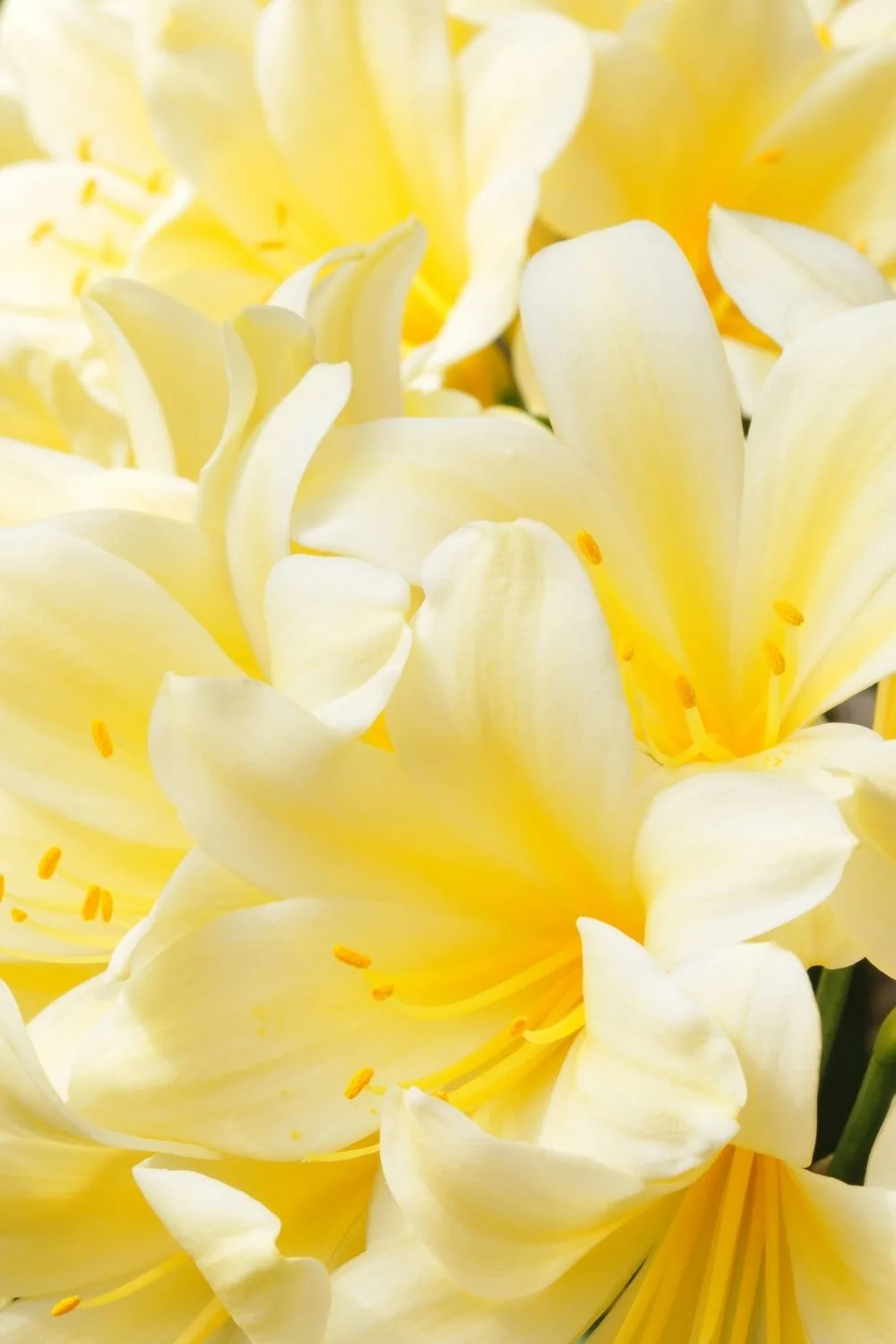
How do you say clivia?
Is clivia said with a long ‘i’ or a short ‘i’. It doesn’t matter because all botanic names are made up so you can pronounce them any way you want.
If it helps, the plant is named after the Duchess of Northumberland, Lady Charlotte Clive, granddaughter of Baron Robert Clive who established the British Empire in India. She was the first to cultivate this southern African native in England.




